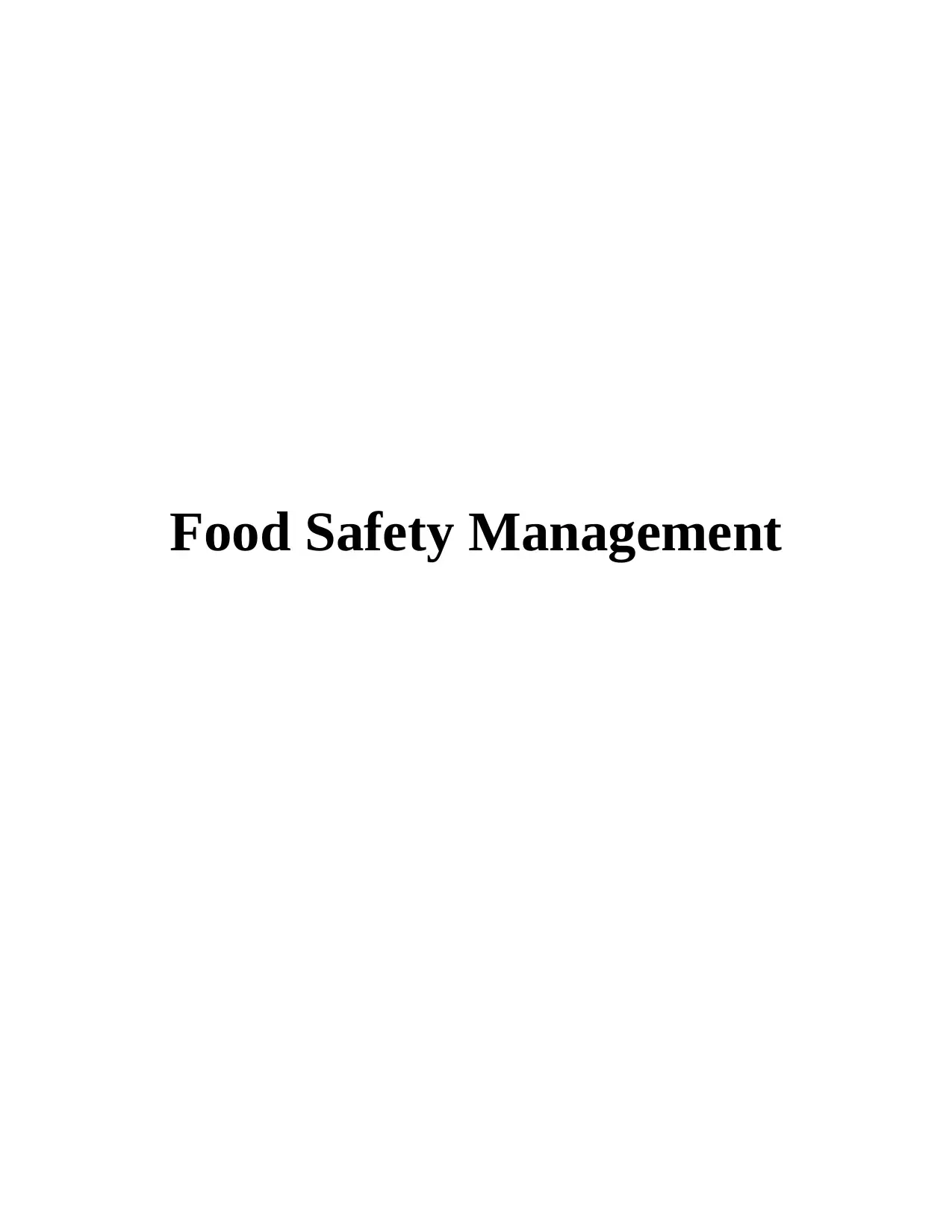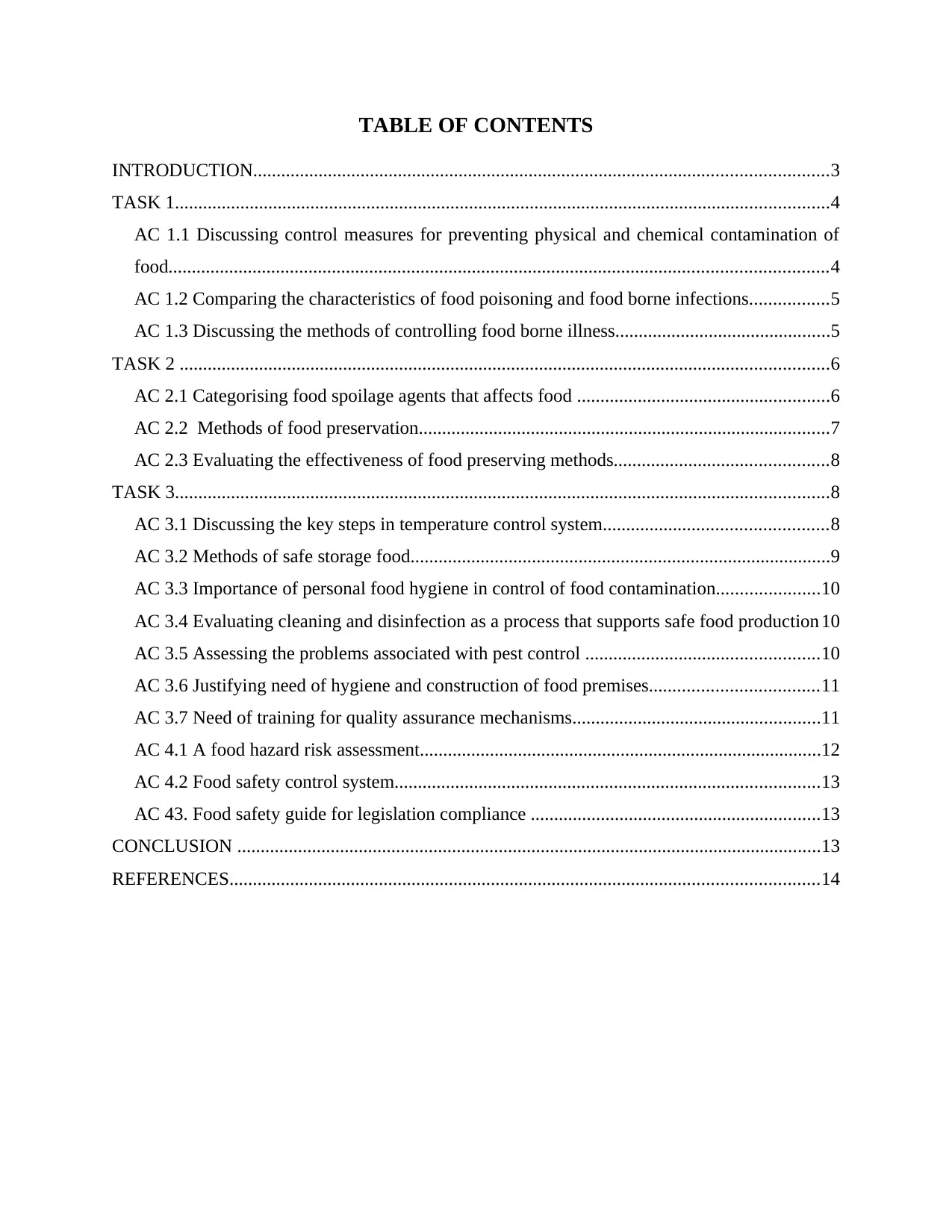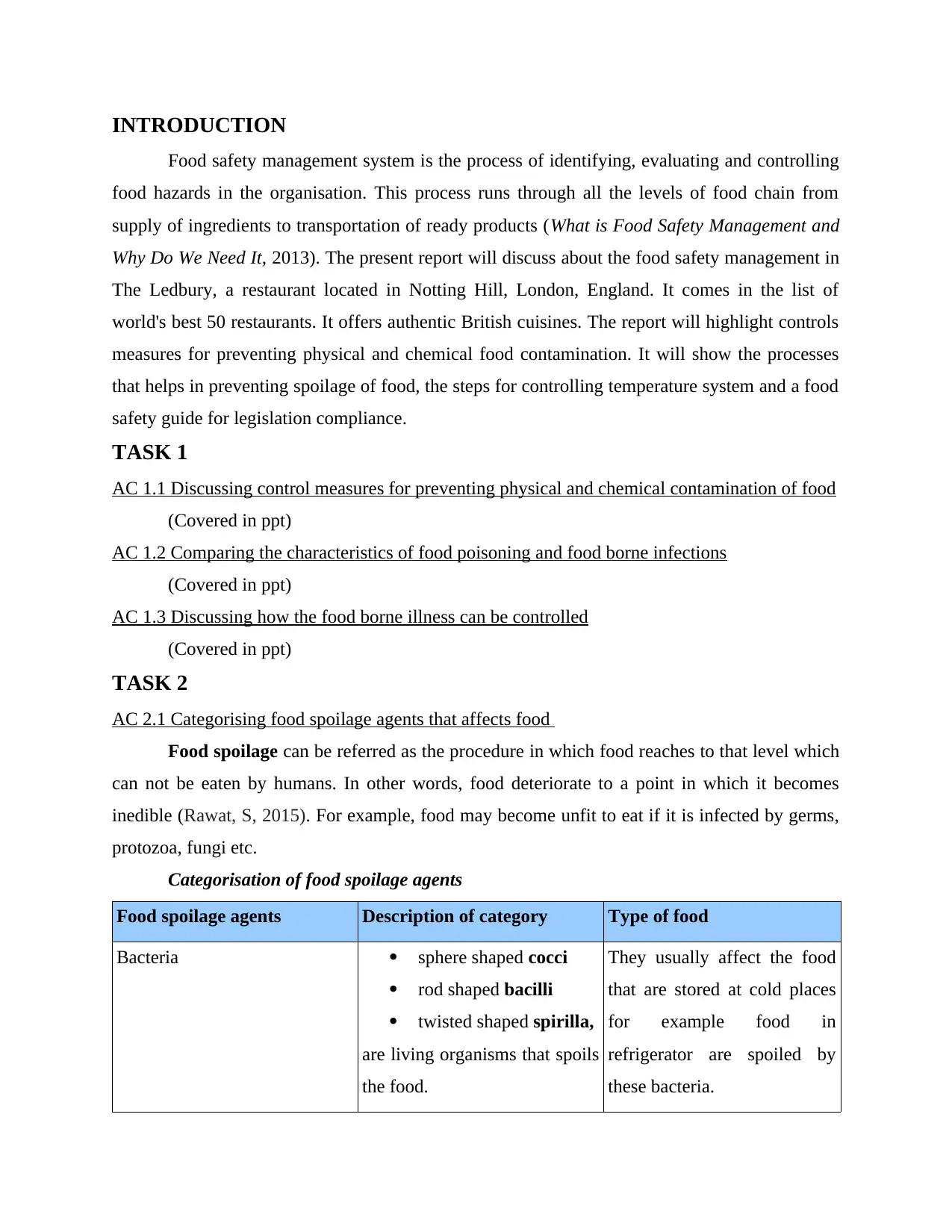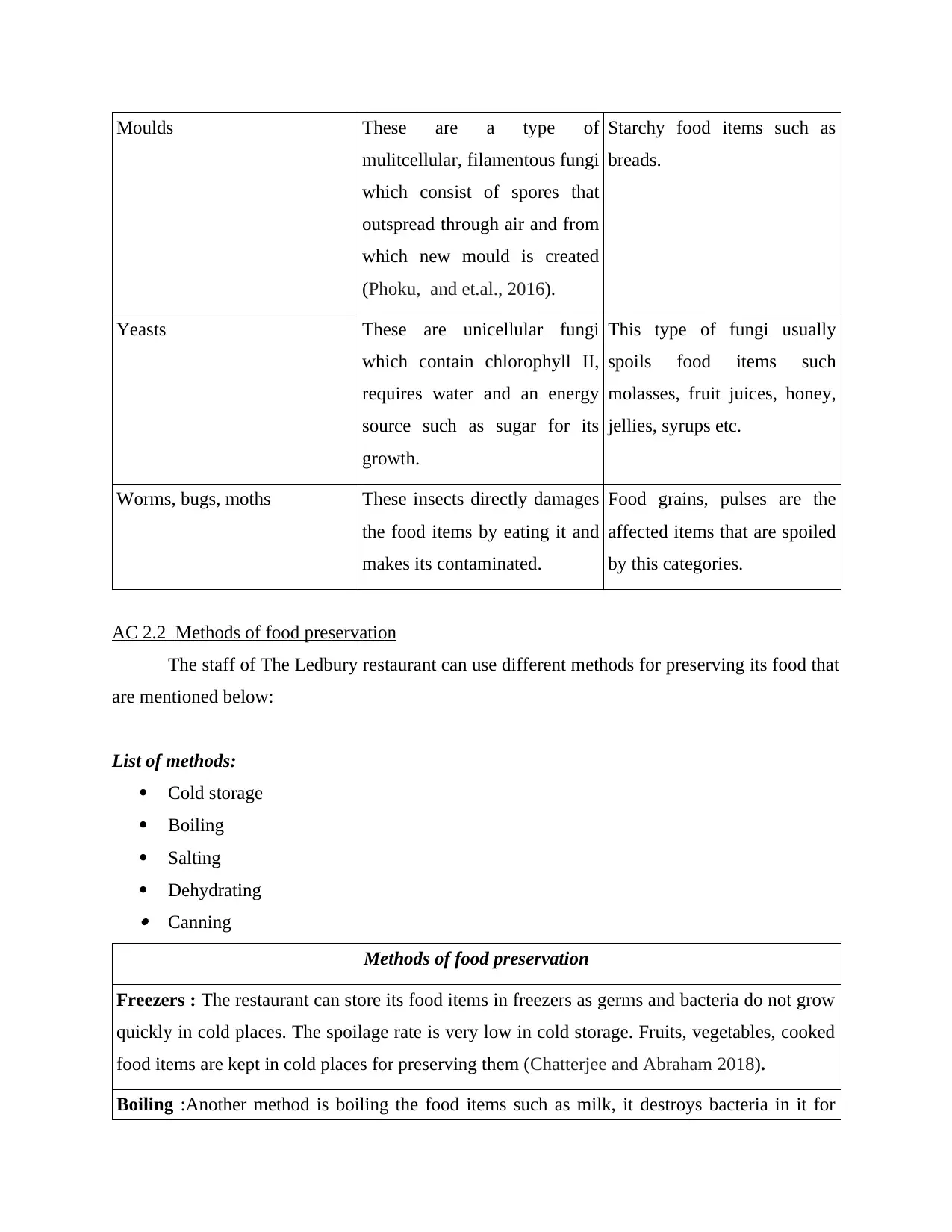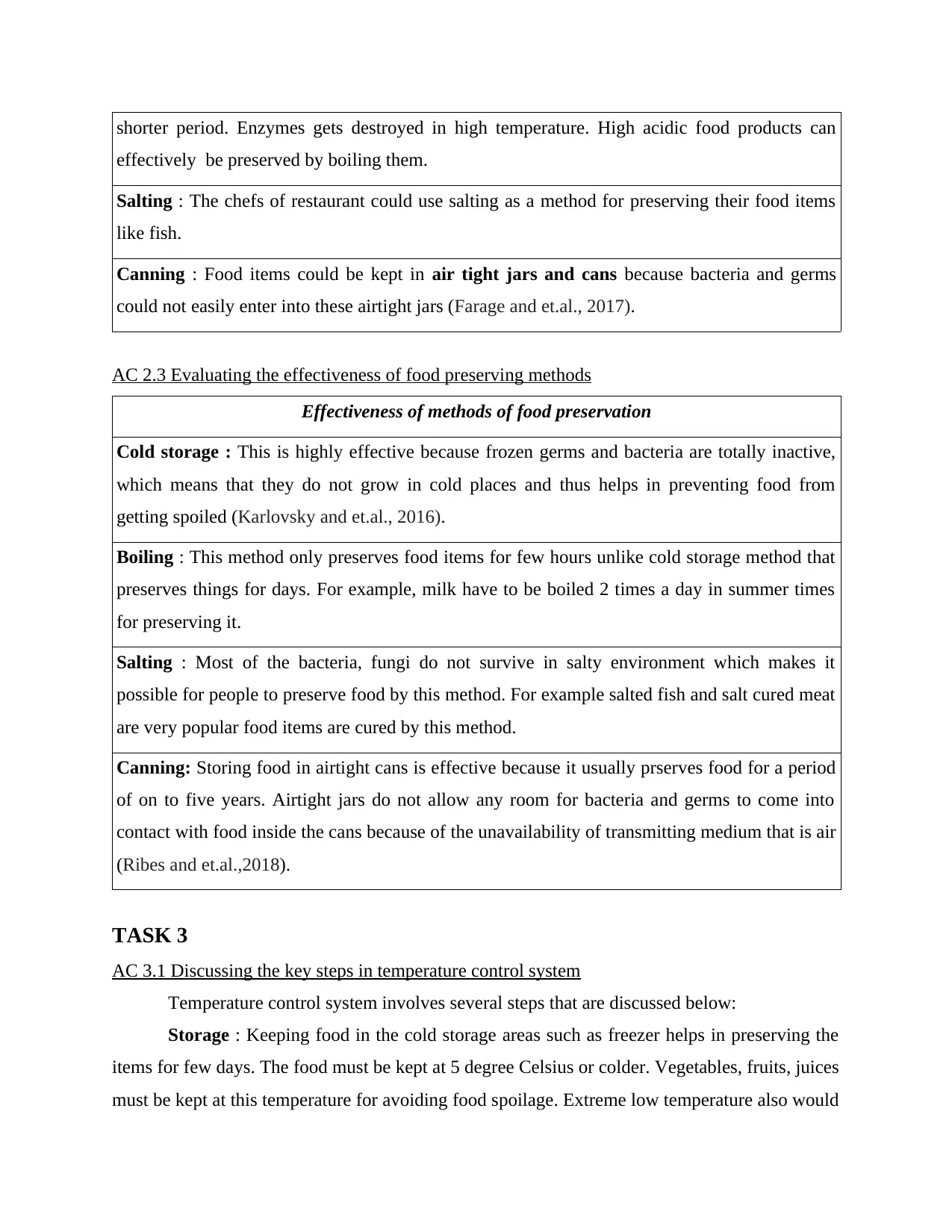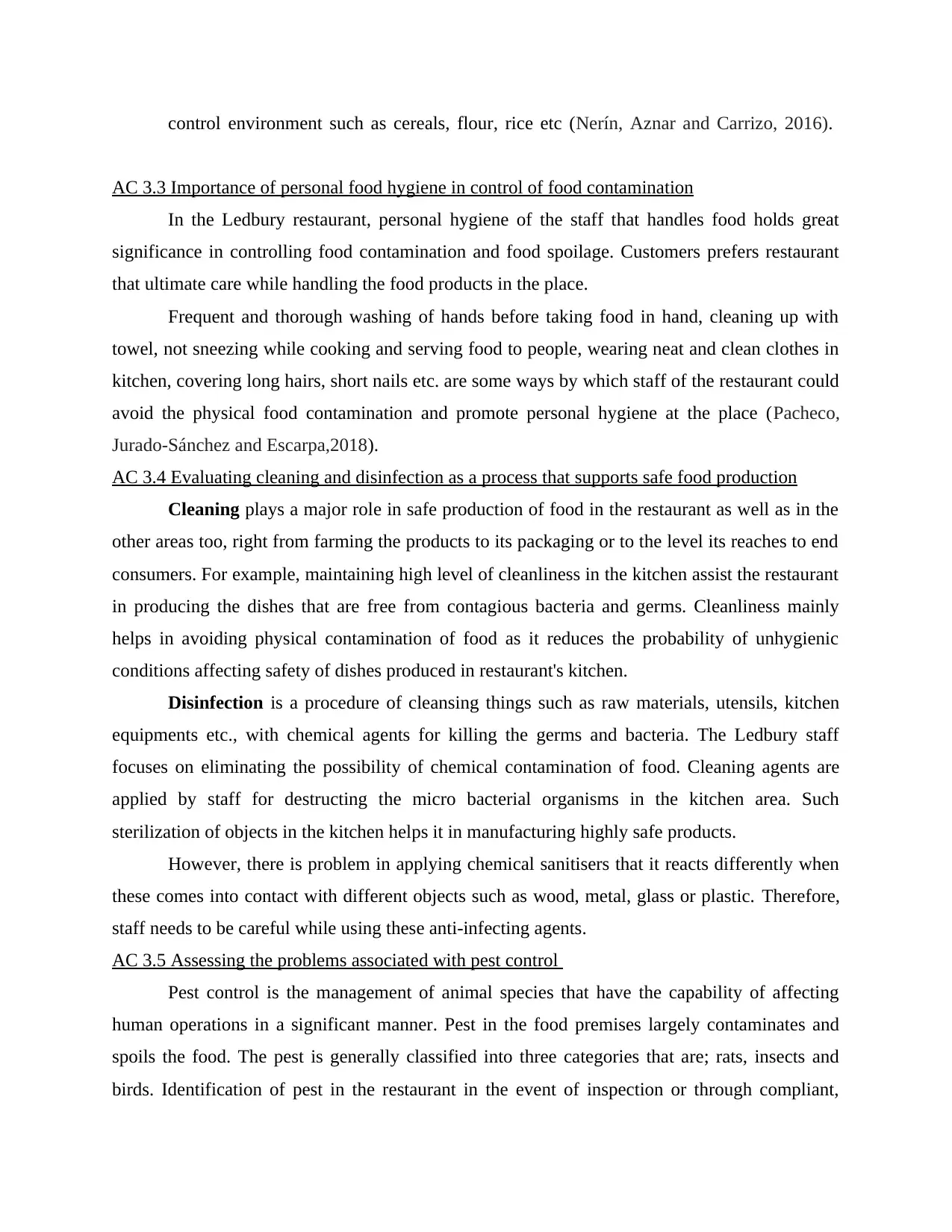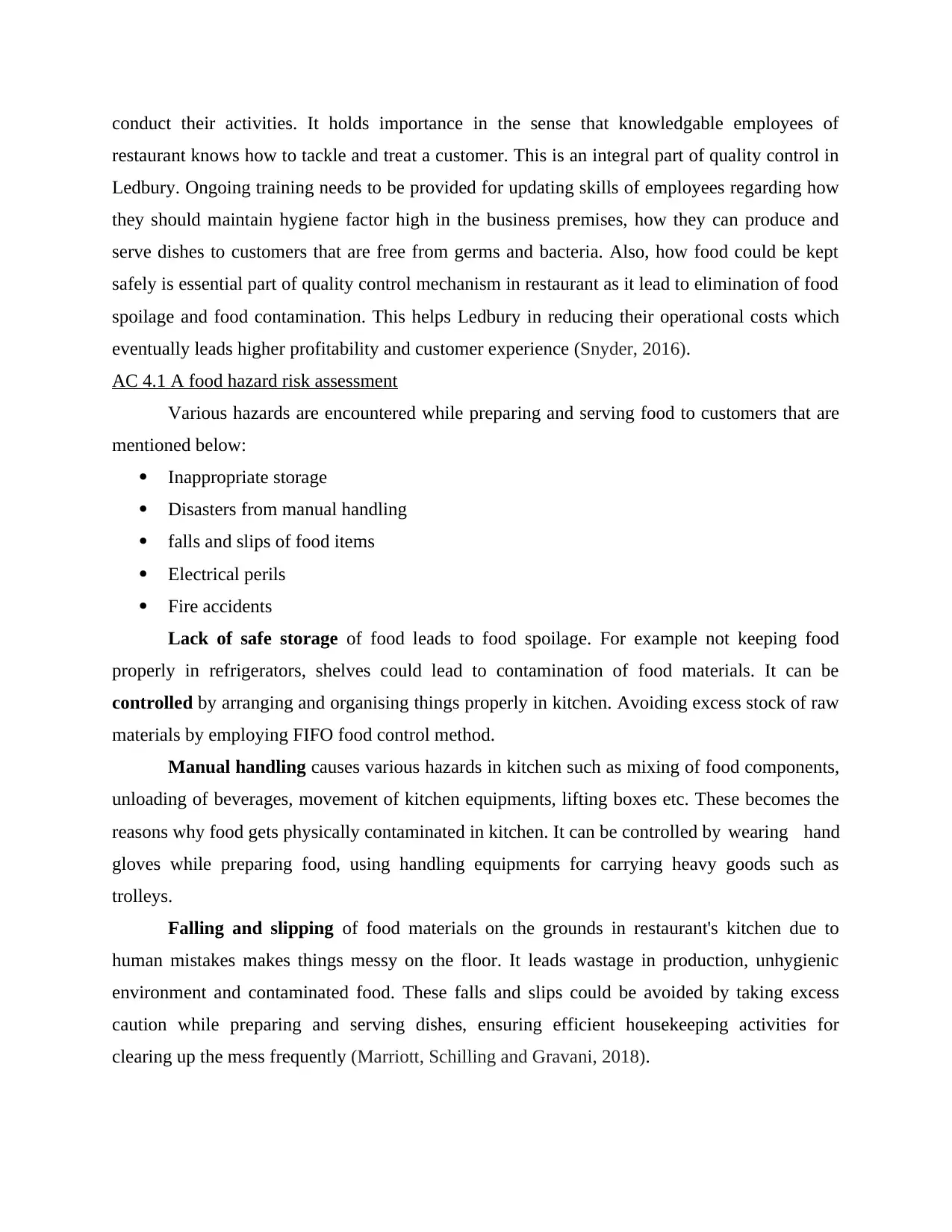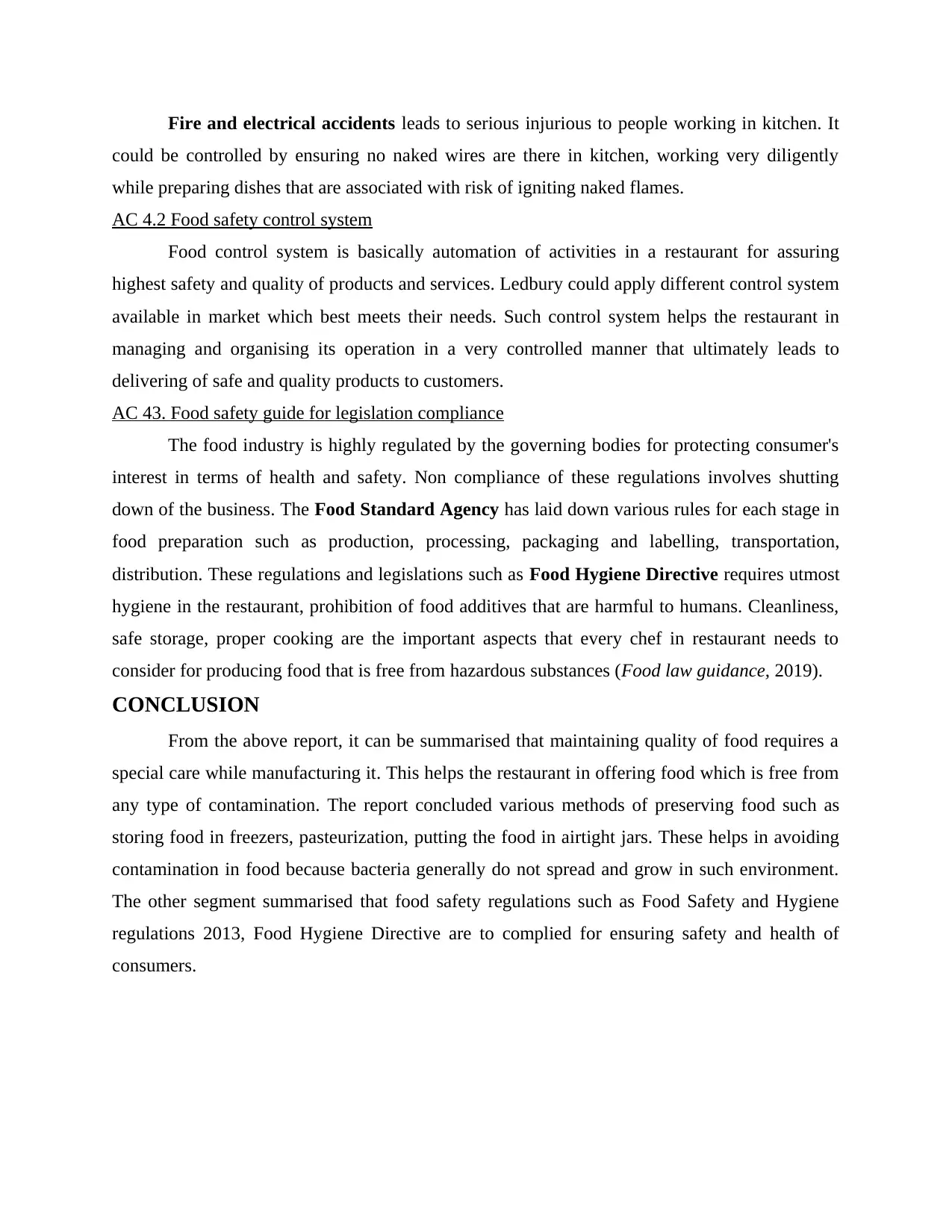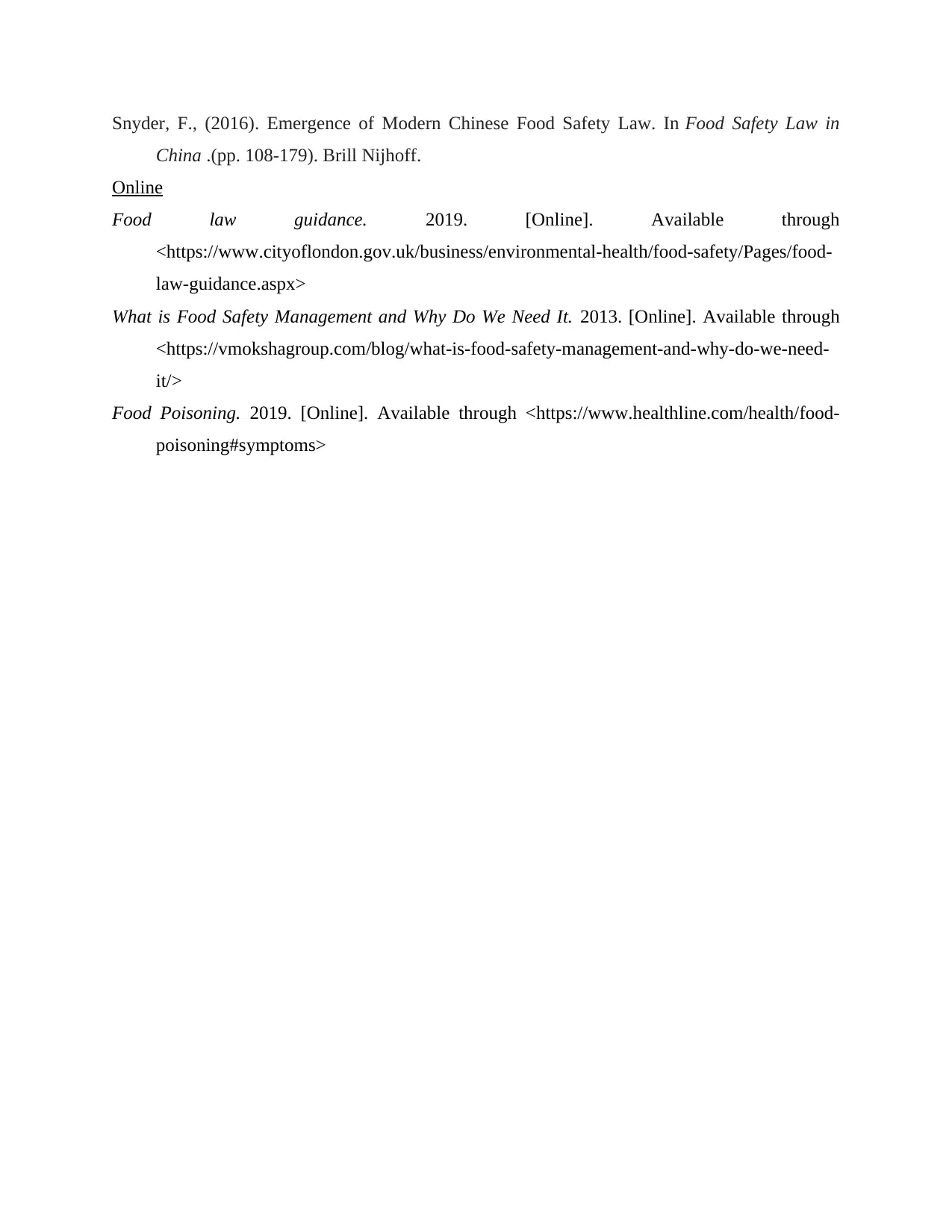This assignment is based on various research papers and articles related to risk assessment and food safety management. It covers topics such as deliberate contamination of food production facilities, microbial contamination prevention, and early detection in the food industry. The assignment also includes environmental sampling for Listeria monocytogenes control and sensitive monitoring of enterobacterial contamination using self-propelled Janus microsensors. Additionally, it discusses the emergence of modern Chinese food safety law and provides guidance on food law in the UK. The summary of the assignment is intended to provide a detailed overview of the topic, highlighting key points and research findings related to risk assessment and food safety management.
![[object Object]](/_next/static/media/star-bottom.7253800d.svg)
![[object Object]](/_next/static/media/star-bottom.7253800d.svg)
